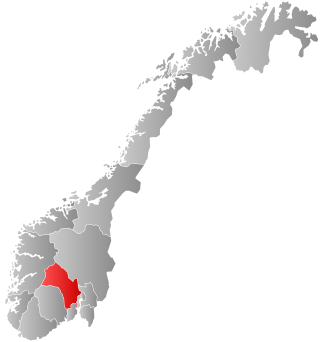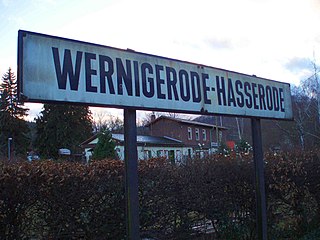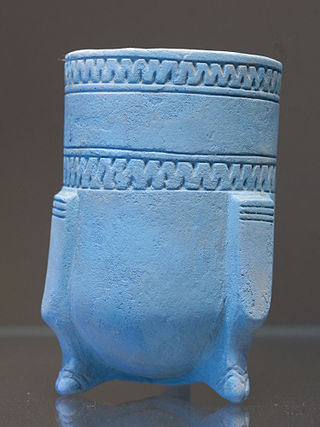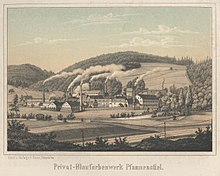
Blue is one of the three primary colours in the RYB colour model, as well as in the RGB (additive) colour model. It lies between violet and cyan on the spectrum of visible light. The term blue generally describes colours perceived by humans observing light with a dominant wavelength that's between approximately 450 and 495 nanometres. Most blues contain a slight mixture of other colours; azure contains some green, while ultramarine contains some violet. The clear daytime sky and the deep sea appear blue because of an optical effect known as Rayleigh scattering. An optical effect called the Tyndall effect explains blue eyes. Distant objects appear more blue because of another optical effect called aerial perspective.

A pigment is a powder used to add color or change visual appearance. Pigments are completely or nearly insoluble and chemically unreactive in water or another medium; in contrast, dyes are colored substances which are soluble or go into solution at some stage in their use. Dyes are often organic compounds whereas pigments are often inorganic. Pigments of prehistoric and historic value include ochre, charcoal, and lapis lazuli.

Buskerud is a county and a current electoral district in Norway, bordering Akershus, Oslo, Innlandet, Vestland, Telemark and Vestfold. The region extends from the Oslofjord and Drammensfjorden in the southeast to Hardangervidda mountain range in the northwest. The county administration was in modern times located in Drammen. Buskerud was merged with Akershus and Østfold into the newly created Viken County on 1 January 2020. On 23 February 2022, the Viken County Council voted in a 49 against 38 decision to submit an application to the Norwegian government for a county demerger. Due to this, Buskerud was re-established in 2024.

Modum is a municipality in Buskerud county, Norway. The administrative centre of the municipality is the town of Vikersund. The municipality of Modum was established on 1 January 1838.

Cobalt blue is a blue pigment made by sintering cobalt(II) oxide with aluminium(III) oxide (alumina) at 1200 °C. Chemically, cobalt blue pigment is cobalt(II) oxide-aluminium oxide, or cobalt(II) aluminate, CoAl2O4. Cobalt blue is lighter and less intense than the (iron-cyanide based) pigment Prussian blue. It is extremely stable and historically has been used as a coloring agent in ceramics (especially Chinese porcelain), jewelry, and paint. Transparent glasses are tinted with the silica-based cobalt pigment "smalt".

Smaltite is a variety of the mineral skutterudite consisting of cobalt, iron, nickel, and arsenide. It has the chemical formula (Co,Fe,Ni)As2.

Blaafarveværket, or the Blue Colour Works, was a mining and industrial company located at Åmot in Modum in Buskerud, Norway, which existed from 1776 to 1898, and which was Norway's largest mining company in the first half of the 19th century. The works mined cobalt ore and manufactured by smelting blue cobalt glass (smalt) and cobalt blue pigment. It is currently a large open-air industrial museum and an art gallery; it is the largest and best preserved mine museum in Europe, and one of Norway's most visited attractions.

Cobalt glass—known as "smalt" when ground as a pigment—is a deep blue coloured glass prepared by including a cobalt compound, typically cobalt oxide or cobalt carbonate, in a glass melt. Cobalt is a very intense colouring agent and very little is required to show a noticeable amount of colour.

Aue is a small town in Germany at the outlet of the river Schwarzwasser into the river Zwickauer Mulde in the Ore Mountains, and has roughly 16,000 inhabitants. It was merged into the new town Aue-Bad Schlema in January 2019. Aue was the administrative seat of the former district of Aue-Schwarzenberg in Saxony, and is part of the Erzgebirgskreis since August 2008. It belongs to the Silberberg Town League

Schneeberg is a town in Saxony’s district of Erzgebirgskreis. It has roughly 16,400 inhabitants and belongs to the Town League of Silberberg. It lies 4 km west of Aue, and 17 kilometres (11 mi) southeast of Zwickau.

Bad Schlema is a community in the district of Erzgebirgskreis in Saxony in Germany. It was merged into the new town Aue-Bad Schlema in January 2019. It belongs to the Silberberg Town League. The Silver Road (Silberstraße) runs through the town. The community is developing its tourist industry, above all its spa facilities.

The Blue budgerigar mutation is one of approximately 30 mutations affecting the colour of budgerigars. It is part of the genetic constitution of the following recognised varieties: Skyblue, Cobalt, Mauve and Violet.

The Preßnitz is a right-hand tributary of the Zschopau River in the state of Saxony in eastern Germany and in the Czech Republic. It rises in the Bohemian part of the Ore Mountains near Horní Halže.

Jacob Benjamin Wegner was a Norwegian business magnate. He was one of the country's leading mining magnates as the director-general and co-owner of Blaafarveværket, and also had significant interests in other mining and timber companies.

Hasserode has been a quarter in the town of Wernigerode in the German state of Saxony-Anhalt since 1907.
The Nickelhütte Aue is a modern manufacturing site in East Germany for pure non-ferrous metals like nickel, copper, cobalt, molybdenum, vanadium and tungsten. It is descended from the historic Niederpfannenstiel Blue Colour Works, a paintworks that was founded in 1635 by Veit Hans Schnorr in Pfannenstiel near Aue.

Petrus Albinus was a professor at Wittenberg in Germany and is known as the father of Saxon historiography.
Jugel is a division of the town of Johanngeorgenstadt in the German district of Erzgebirgskreis. This dispersed settlement is surrounded by woods, is divided into Ober- and Unterjugel and runs along the German-Czech border from the Lehmergrund to the crest of the Western Ore Mountains. In the vicinity lies the 980 metre-high Scheffelsberg. Jugel is a tourist destination for hikers and winter sportsmen.

The Aufgeklärtes Glück Mine is an old mine, now closed, in the valley of Thumkuhlental in the Harz Mountains of Germany. It lies southwest of Hasserode, a village on the edge of the town of Wernigerode in the state of Saxony-Anhalt. Nowadays, its exterior facilities form part of a nature and geological educational path that, thanks to the reconstruction of an old mine water management system (Wasserkunst), make a very graphic witness of the former mining activity at the foot of the Harz' highest mountain, the Brocken.

The color blue has been important in culture, politics, art and fashion since ancient times. Blue was used in ancient Egypt for jewelry and ornament. In the Renaissance, blue pigments were prized for paintings and fine blue and white porcelain. in the Middle Ages, deep rich blues made with cobalt were used in stained glass windows. In the 19th century, the colour was often used for military uniforms and fashion.


















